We’ve been sending a new weekly “Six Feet in Solidarity” email on Thursdays to keep you company!
Our hope is to stay connected and continue serving up resources to build your water knowledge around different topics for as long as social distancing lasts.
We’ll be pulling from our library of publications, news stories, webinars, videos, radio programs, and more, and also sharing key resources produced by others in the water community. If you have ideas, please share at info@wateredco.org.
We started off with an email focused on land use and water, then last week we focused on stream management plans in Colorado. This week we’ll take a look at environmental justice and equity in the water sector. Read on to learn more. And continue to be well!
Pursuing Water Justice

Interstate 70 and a Nestle Purina pet food factory loom above northeast Denver’s Elyria-Swansea neighborhoods. By Matthew Staver
Environmental justice is the concept that all people deserve a healthy and safe environment—including access to clean, safe water for drinking and enjoying. Yet, even in Colorado, that access is not a given, nor is equitable representation in making decisions that can impact water and health. But it could be.
Where do water-related environmental justice issues exist?
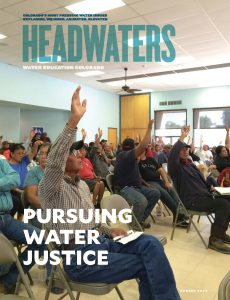 From the story “When Water Justice is Absent, Communities Speak Up,” from the new Spring 2020 issue of Headwaters magazine: Environmental injustices in Colorado, or anywhere, can span cities and suburbs, sovereign tribal lands, and rural communities.
From the story “When Water Justice is Absent, Communities Speak Up,” from the new Spring 2020 issue of Headwaters magazine: Environmental injustices in Colorado, or anywhere, can span cities and suburbs, sovereign tribal lands, and rural communities.
They have their roots in narratives of immigration, development and industry, and political power dynamics, further influenced by evolving legal and regulatory frameworks. While there are many examples across the state, a few where impacted communities are now fighting back include:
Acequia water rights in the San Luis Valley
In southern Colorado’s San Luis Valley, acequia communities fought for years to protect their water rights and way of life. Acequias are an equity-based irrigation system introduced by the original Spanish and Mexican settlers of southern Colorado. It wasn’t until 2009 that the Colorado Legislature passed the Acequia Recognition Law. Amended in 2013, the law solidifies the rights of acequia users.
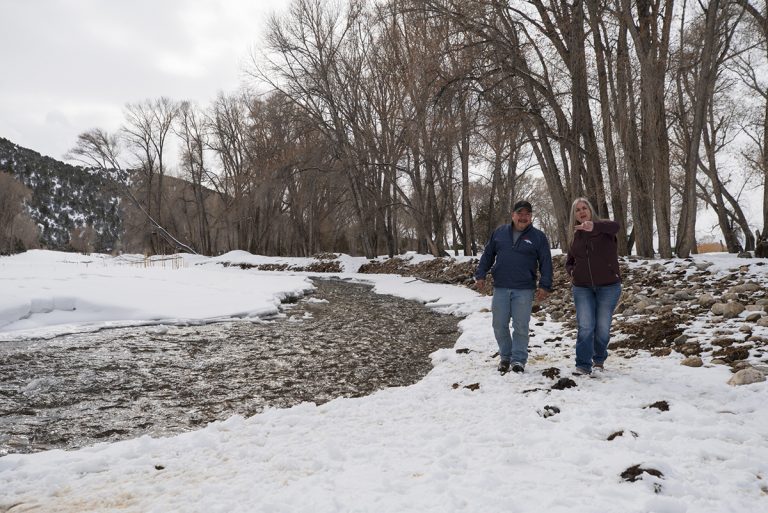
PFAS groundwater contamination in Fountain and Security-Widefield
In 2016, residents and water providers in Fountain and Security-Widefield learned that PFAS chemicals, short for per- and poly-fluoroalkyl substances, were detected at levels above EPA’s new 2016 health advisory levels. The source: firefighting foam used for decades to extinguish training fuel fires at the U.S. Air Force’s Peterson Air Force Base.
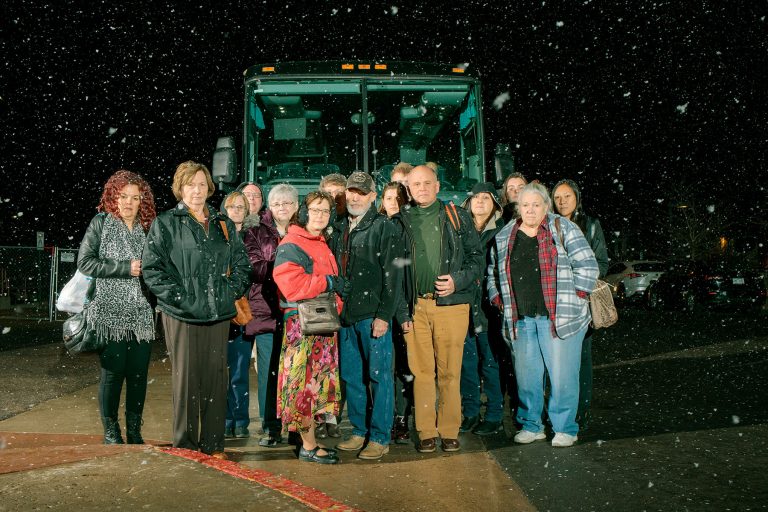
Working toward a more fishable and swimmable Denver South Platte River
Two years ago, a study from ATTOM Data Solutions found that America’s most polluted neighborhood was in northeast Denver’s 80216 zip code, which includes Globeville, Elyria-Swansea and River North. One approach there is proceeding thanks to an EPA environmental justice grant, in which organizers are convening youth, local leaders, and scientists to create a community science project that leads to a more fishable and swimmable Denver South Platte River.

Read more from Headwaters Magazine:
…to learn about these stories and other places where communities are speaking up in this featured article from our Spring 2020 issue.
How do you engage environmental justice communities?

(From “Toolkit for Pursuing Water Justice” in the new issue of Headwaters magazine, check out the flipbook of the issue to view the toolkit):
We got advice from Colorado practitioners Michael Wenstrom with EPA’s Environmental Justice Program, Ernest House, Jr. with the Keystone Policy Center, and Lizeth Chacon with the Colorado People’s Alliance.
Here’s what they suggest:
1) Meet the community where they are. Begin by listening to people and helping address their most immediate concerns and needs.
2) Acknowledge the past, and make sure it’s part of today’s conversations about the future.
3) Involve community members from the beginning. Whether you’re developing a project, trying to address concerns in a neighborhood,
or looking for input, reach out early so communities can shape the change they want to see.
4) Have more conversations within the water sector—or among government agencies, conservation groups, agricultural groups—
about race, diversity, inequality, equity, and what needs to change to engage communities of color.
5) Remember that outside organizations don’t change communities, communities change communities. But they have to believe that
they can. Help them understand what they can accomplish.
Want more tips? Read full Q&As with these experts on our blog:
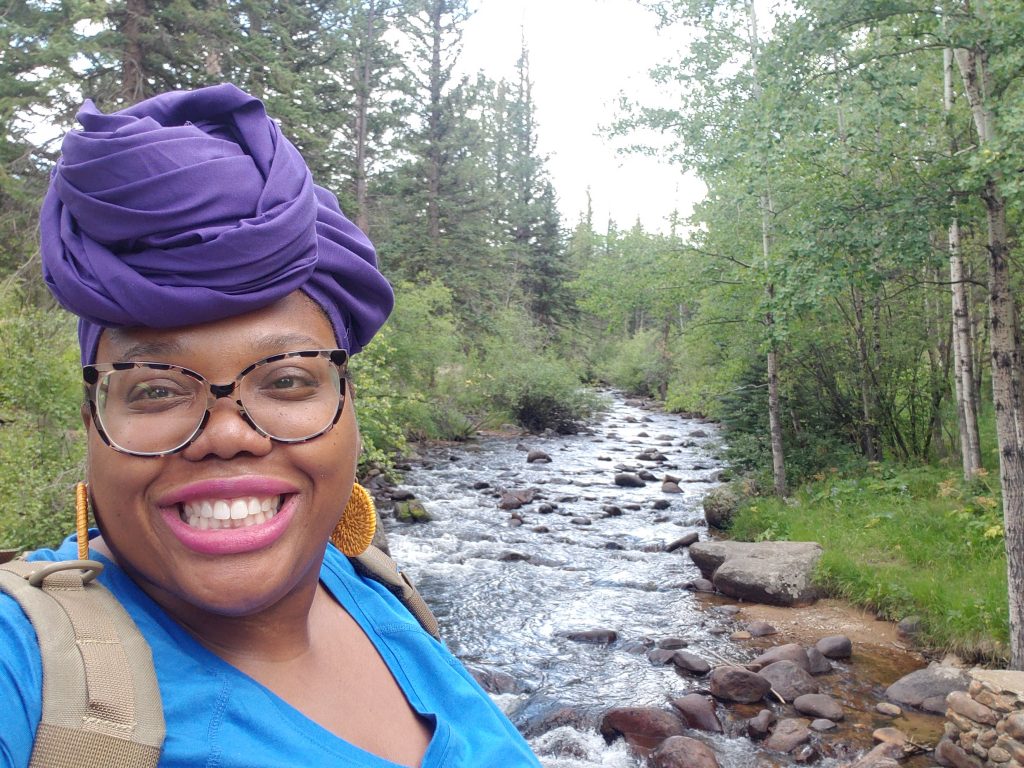 Parker McMullen Bushman, Ecoinclusive
Parker McMullen Bushman, Ecoinclusive
… on the importance of equity in water
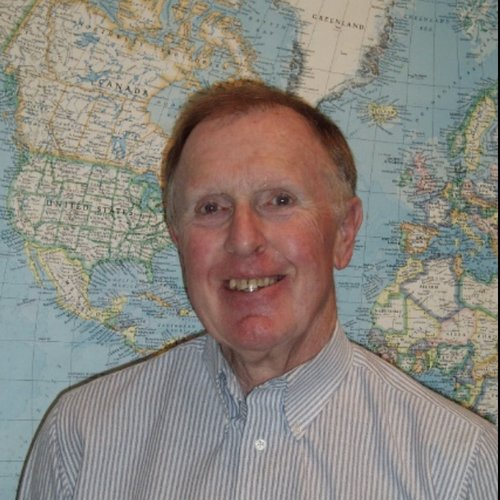 Michael Wenstrom, EPA Environmental Justice Program
Michael Wenstrom, EPA Environmental Justice Program
… on environmental justice and the importance of serving the underserved
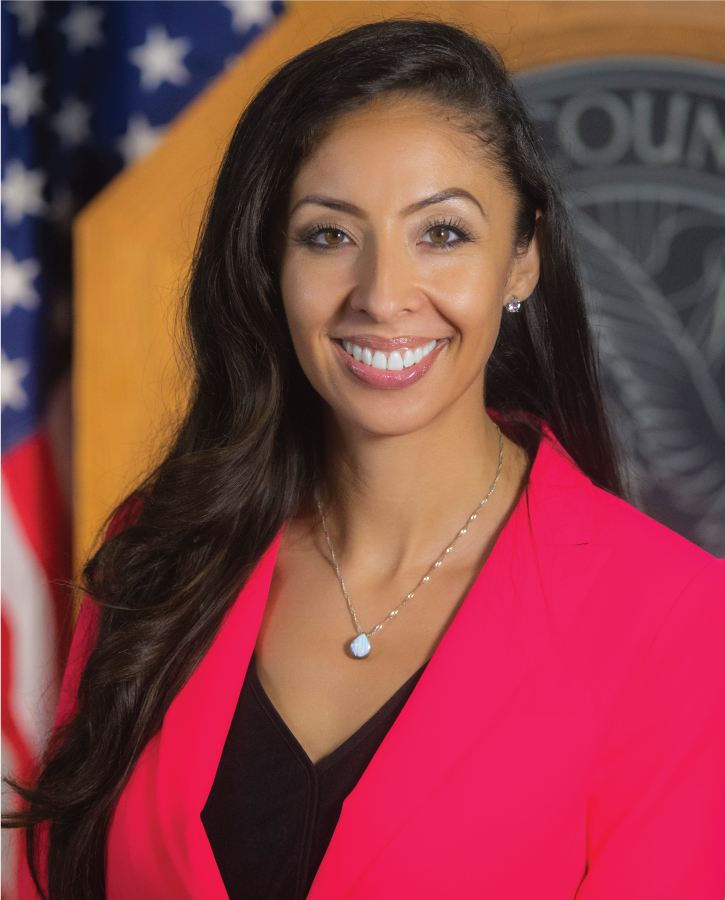 Candi CdeBaca, Denver City Council, District 9
Candi CdeBaca, Denver City Council, District 9
… on building people (and political) power around environmental justice issues
More Resources from WEco on Environmental Justice and Equity
WEco leading in commitment to equity in programming
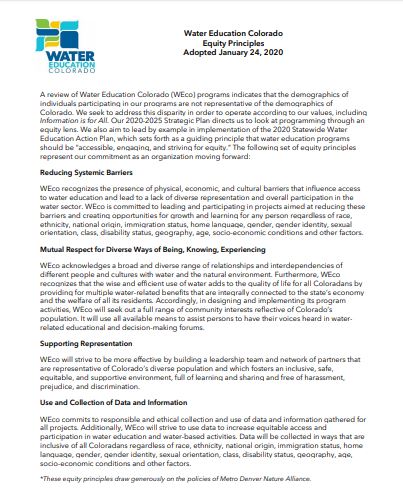 Our equity principles were adopted in January 2020 to represent our commitment to provide opportunities capable of equipping ALL Coloradans, regardless of background, race or demographic, with the knowledge and skills needed to engage in making smart decisions for a sustainable water future. Find the principles here.
Our equity principles were adopted in January 2020 to represent our commitment to provide opportunities capable of equipping ALL Coloradans, regardless of background, race or demographic, with the knowledge and skills needed to engage in making smart decisions for a sustainable water future. Find the principles here.
A conversation with Greg Hobbs on water equity
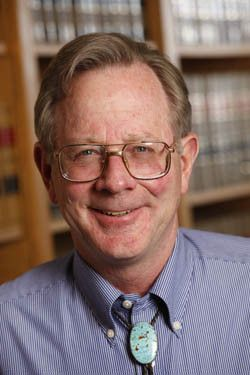 Greg Hobbs is a founding board member of Water Education Colorado, established in 2002. Since then, he has served as the vice president of our Board of Trustees and chair of our Publications Committee. Over the past year, the former Colorado Supreme Court justice has also been involved with WEco’s new Equity Committee, which developed a set of equity principles that were adopted by the board in January 2020. We spoke with Greg about this equity-related work. Read the interview here.
Greg Hobbs is a founding board member of Water Education Colorado, established in 2002. Since then, he has served as the vice president of our Board of Trustees and chair of our Publications Committee. Over the past year, the former Colorado Supreme Court justice has also been involved with WEco’s new Equity Committee, which developed a set of equity principles that were adopted by the board in January 2020. We spoke with Greg about this equity-related work. Read the interview here.
In an era of rising costs, can Colorado keep its water affordable?

Credit: Adobe Stock
It will take a concerted effort to deliver quality water while keeping rates from rising in a way that disproportionately affects lower-income families. Read the story, published in the spring 2020 issue of Headwaters magazine, here.
Forthcoming podcasts with American Rivers
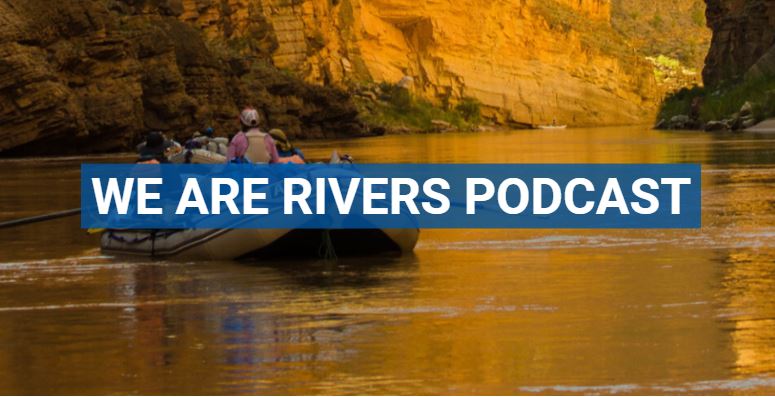 Hear voices discussing environmental justice in a new three-part podcast series. We’ve partnered with American Rivers to further explore the topic through their podcast “We are Rivers: Conversations About the Rivers that Connect Us.” Tune in later this spring at americanrivers.org/podcast and on iTunes and Stitcher.
Hear voices discussing environmental justice in a new three-part podcast series. We’ve partnered with American Rivers to further explore the topic through their podcast “We are Rivers: Conversations About the Rivers that Connect Us.” Tune in later this spring at americanrivers.org/podcast and on iTunes and Stitcher.
Colorado health officials, citing rise of “forever chemicals” in water, vow to increase oversight

The Colorado Department of Public Health and Environment, Sept. 10, 2019. Credit: Jerd Smith
Colorado public health officials are set to begin regulating one of the most controversial sets of cancer-linked chemicals in water supplies later this year, citing increasing evidence of the compounds around the state. Read the story, published in Fresh Water News in September 2019, here.
More Resources From Other Organizations
Ecoinclusive’s Conservationists of Color Community Check In
 This Friday, meet virtually with conservationists of color across the U.S. Learn more and register here.
This Friday, meet virtually with conservationists of color across the U.S. Learn more and register here.
New website for the Interdisciplinary Research Institute for the Study of (in)Equality
![]() Find many great resources including a blog, podcast, information on IRISE and much more. All available here.
Find many great resources including a blog, podcast, information on IRISE and much more. All available here.
U.S. EPA’s Environmental Justice Program
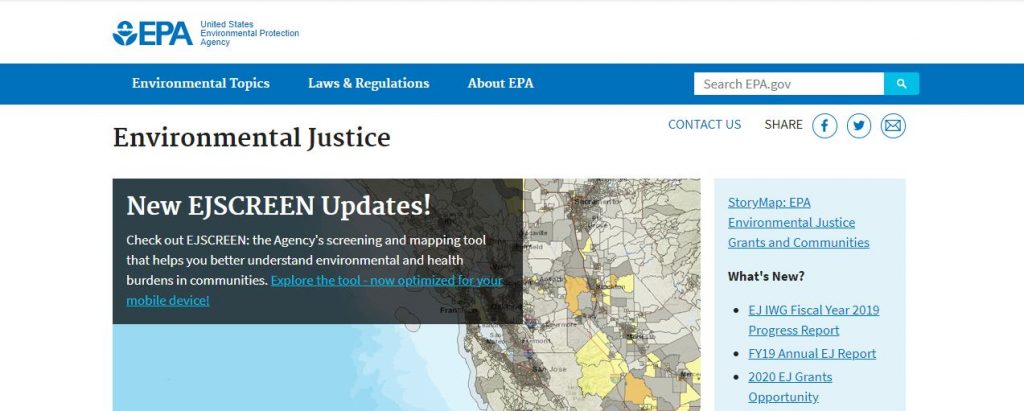 Learn about EJ, grant opportunities, and many more resources through EPA’s website here.
Learn about EJ, grant opportunities, and many more resources through EPA’s website here.
Environmental Justice Working Group through CSU
![]() The working group aims to create space for engaged interdisciplinary scholarship, training and teaching, and community-building around issues of environmental injustice. Learn about it here.
The working group aims to create space for engaged interdisciplinary scholarship, training and teaching, and community-building around issues of environmental injustice. Learn about it here.


 Print
Print